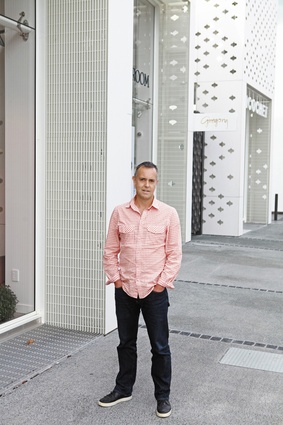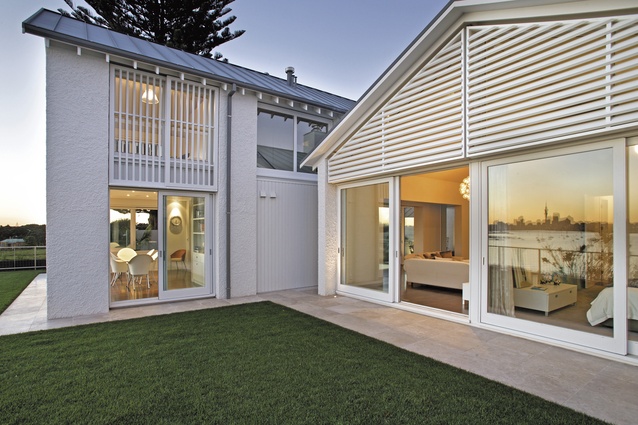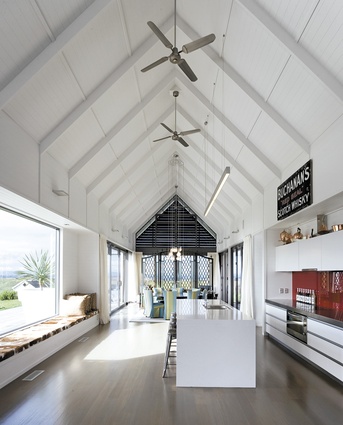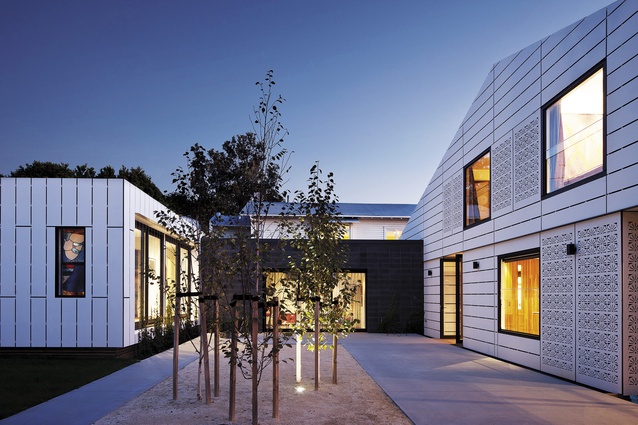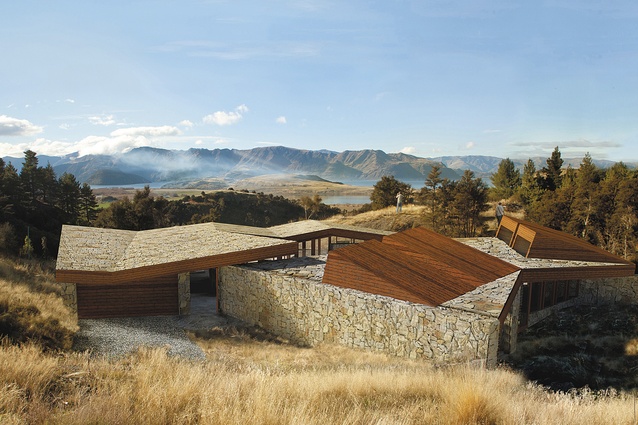With Richard Naish of RTA Studio
Richard Naish is a founding director of Auckland-based practice RTA Studio. He talks to Claire Ellery about his architecture career so far.
Did you grow up in Auckland, Richard?
No, I grew up in Taranaki actually, but I was born in Bluff. I moved to Auckland when I started architecture school essentially and haven’t moved since.
Did you choose to study in Auckland over Wellington because you wanted to be in Auckland or because of the course?
I didn’t apply for Wellington and I think at the time the Auckland school had a particularly good reputation and I decided that was it, that was the one, and I just applied for that but I didn’t actually get in initially. I think they required a drawing portfolio as part of your application and I thought that will give me the edge because I had a bit of a slack time at school. But I didn’t get in until the day before university started. I was obviously top of the waiting list and got a phone call from the dean the day before university started, so I was sort of last in.
Did you enjoy doing your architecture degree?
Yes. It was refreshingly what I hadn’t imagined, actually. I think I described it at the time as feeling like I was doing a fine arts degree. I thought it was going to be much more engineering and physics based.
Did you find work straight away?
No-one found work in 1990. It was a one hundred per cent fail rate in the finding-work department because it was the height of the recession after the 1987 crash. So that was enormously frustrating; by that stage I’d got really revved up to do it. I just got a list of architects that I nagged for a year until one of them gave me a job; so I was unemployed for the first year.
When did work start picking up for architects?
Well it carried on for a few years because I got a job at Jasmax working predominantly with Pete Boswell and then Pip Cheshire. Then I decided to throw all that away and go to London after 18 months, and when I hit London it was in an equally dismal stage. I got a job – I had put out about 25 curriculum vitaes and got one letter inviting me for an interview and managed to get that job and it was the first employee they’d taken on since the crash, I think. That was about 1992, five years later.
What made you decide to go out on your own?
Well it’s actually something that I had decided in university days. Initially I thought, ‘right, as soon as I get out of here I’m going to start up a business and it’s all going to be good’. Then I think that year of unemployment made me realise that it wasn’t actually going to be very easy and I should probably get a bit of experience under my belt. Then the more experience I got, the more I realised what I didn’t know, so I fairly quickly came to the conclusion that I might leave it for a while, which was probably the best thing. It was when I was in London that I coincidentally ended up working with Tim Melville. We became mates in London and we started talking about the plan then, but we both worked for another four or five years before we started it.
Did Tim work at Jasmax as well?
We worked together in London; we overlapped there for a year and then we also worked together at Jasmax for four or five years afterwards and it was during that time that we hatched the plan.
Did you have a project to get started on?
When it came to the crunch, Tim was in a slightly different space in his personal life so I decided that I was going to do it on my own and I thought he’d come and catch up when he was ready; so I started a company called RNA Studio. I was finishing quite a major design project at Jasmax and at the same time I got an opportunity to design apartment buildings and I thought that was a good catalyst. It was a retro apartment building in Brown Street in Ponsonby and it sort of galvanised Tim’s resolve to take the chance at that stage too; so, six or eight weeks later, he joined me and we changed the name to RTA Studio.
And how has the practice evolved since then?
It doubled in size every year or two until we hit about 10 – so I guess you’d call that fairly fast growth. Then it sort of oscillated between 10 and 20 for almost eight years. Now of course Tim’s left the practice and so the only thing that’s really changed is the upper limit of 20 probably becoming 15 and we’ve currently got 12 or 13, so that’s the ideal size for us now.
What kind of work does the practice do mostly?
We don’t name ourselves or box ourselves as anything really. We work across the whole field - residential, commercial, institutional, interiors …but if you were to do the stats I think you’d probably find that houses are about twenty-five per cent of what we do. The rest is made up of mostly educational and commercial work with corporate interiors.
Is there one house or project that stands out for you as having been particularly interesting?
A recent project - the C3 house - even though it’s not built, is probably an example of an enormously exciting project because it’s breaking new ground on a whole sustainable level and in carbon neutrality. But it’s also succeeding as a piece of architecture for a real client on a real site and is a conventional project in terms of process; it’s just not built yet.
One last question, Richard: do you have a favourite New Zealand house?
I worked with Pip Cheshire when the Congreve house was being built so, in terms of my own personal experience, I’m probably a little bit biased because I worked with Pip and I experienced that house, which isn’t an ordinary house. It is an extraordinarily unique piece of architecture.
For the full interview, pick up the June issue of Houses.

